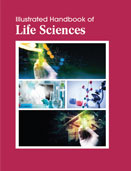Handbooks

The text describes all topics so even beginners can easily understand the theoretical and practical aspects. The life sciences are a collection of disciplines that investigate the structure and function of living things from molecules to entire ecosystems. The life sciences are rapidly-advancing and thoroughly exciting fields of study that include: anatomy, animal biology, bacteriology, biochemistry, cell biology, ecology, evolutionary biology, genetics, molecular biology, plant biology, physiology, and virology. The life sciences are vital to further increase our understanding of human health, environmental issues, and broader matters that increase our nderstanding about the web of life on earth. A clear and concise survey of the major issues and concepts embedded in the history of life science, this book covers the development and significance of scientific methodologies, the relationship between science and society.
Science is extremely important in everyday life because there is not one aspect of daily living that science has not made easier, faster or safer. Science results in technology that people rely on for health, communication and transportation. Scientific knowledge helps people understand the world from a cellular to a universal level. Life science is a term mainly used by educators to refer to biomedical topics such as evolution, genetics, anatomy and physiology, or topics that have to do with human society and functioning, such as psychology or anthropology. Life sciences are all scientific fields that deal with the study of life.
Illustrated Handbook of Life Sciences addresses the key issues within this rapidly growing field on life, science and technology. Scientific inventions and discoveries have changed the way mankind lives in the modern world. Technological advancements have made our lives completely different compared to how our ancestors lived. The most vital area of advancements is in the field of bioscience. Bioscience has really helped in improving the majority of the population?s general health. This is all attributed to bioscience research, which has made tremendous improvements in the health industry. Diseases that were impossible to cure are now curable thanks to cloning, genetic engineering, radiotherapy and chemotherapy technologies. These advancements have opened doors for better living and new career opportunities. The life sciences are vital to further increase our understanding of human health, environmental issues, and broader matters that increase our understanding about the web of life on earth. Aspects of the life sciences are bound up in a range of social issues such as ageing, the control of infectious disease, environmental challenges from global warming to waste management and the threat to biodiversity. The life sciences help us understand lifestyle health choices and healthy eating, but they also challenge our understanding of life in the application of advanced biological sciences. This has led to the revolution in our lives, which has improved our living standards. This leads to inventions and discoveries which have speed up diagnosis and testing of diseases, unlike the conventional way which took much more time to do. Illustrated Handbook of Life Sciences provides the study of cell structure and function, Focusing on the cell permits a detailed understanding of the tissues and organisms that cells compose. This Handbook is intended as a Textbook for students and researchers that promotes greater understanding in cell and human biology, genetics, microbiology and zoology.